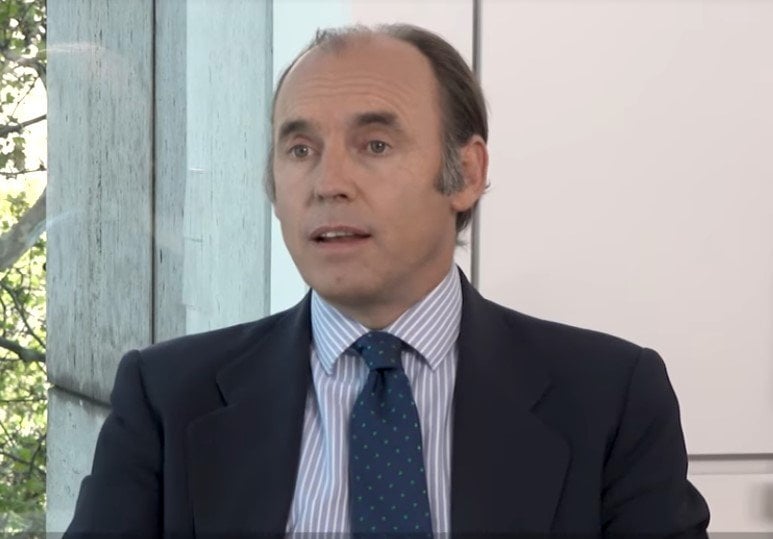Investors are always on the hunt for yields, for a return on the money they decide to make available to a team of professionals who know what can be done with it, seeking the best and most attractive investments at all times.
Today we will talk about returns and interest, or types of interest rather. And we will do so with Beltrán Parages, Head of Investor Relations and Business Development at azValor.
Q1 hedge fund letters, conference, scoops etc, Also read Lear Capital: Financial Products You Should Avoid?
Beltran Parages - The Magic Of Compound Interest
Transcript
Interest generically is the return obtained by a capital invested in an asset at the time of these financial assets and by simply speaking what one earns when he invests something. And there are two types as well you say simple interest and compound interest simple interest is the benefit that an original capital gets annually without reinvesting the cash flows. The benefits it generates over this capital, which is a linear return. To give an example a numerical example if one invests 1000 euros for ten years and generates a 10 percent return made because each year receives 100 units. 1000 of capital 100 units each year which ends that period of 10 years with 2000 units the thousand initial capital that contributed more than 10 times 100 that has received over these ten years constitutes interest without talking about compound interest. In the area of the magic of compound interest because Albert Einstein said that it was the most powerful force in the galaxy and many people dare to say that compound interest is the eighth wonder of the world. It is something that is little intuitive little perceptible in the head of the human being when one lowers numbers and sees it is clearly seen the power that has the compound interest against the position of simple interest in compound interest flows that are generated from that initial capital is incorporated and the capital base that is exposed to that interest is increased again.
For example the 1000 euros the original 1000 euros that we had invested in simply decomposed interest work in a different way because effectively in the first year you generate a 10 percent that is 100 euros with which you finish the first year with 1000 1100 euros in the second year the 1100 euros return to remain the 10 percent which generates in 111 units that you finish in. 21. The third in 1830. And so you accumulate until the tenth year. Antonio look how interesting that in the first case we have concluded that we finish with 2000 economic units in this case we finish with 2600. Thousands of capital have been put in the first case has already finished with 2000 has generated 1000 of profit. In our case we have contributed a thousand and we have finished with 2600. We have given 1600 that is 60 percent more profitability. In the case of compound interest that is of simple interest something that seems not very important at the beginning but when one does the series of numbers and lengthens the time it is seen and is palpable. The big difference that it generates at prices 1 6. The issue of how compound interest acts and the possibilities it has for any investor. Well it is very difficult to perceive this is really complicated. That's why a secret remains very well guarded that to have a power and a generation of profitability that very few people were able to see. Fortunately before us we have had cases like Mr. Buffet. But not only John F. Alterarlos would call them Belial and many managers many investors like us and fundamentals who have done it.
And there we have the living example Mr. Buffett in 1965 begins Berkshire Hathaway at that time with ten thousand dollars we would have bought 808 shares and if we had maintained 808 shares today are worth 240 million euros. Mr. Bafle has had the ability to generate and capitalize the capital at a compound interest of twenty-nine percent, which is obviously not easy to replicate but if we ask someone on the street that obtaining a 20 percent income is important neither does the gesture change. People seek to double the money rather in a year than to make a constant return over many years and yet the impact of the effect of repeating that profitability for many years. As we have seen in the case of PSA, it is spectacular how the time-limit factor acts since it is one of the two important factors, one is interest or time. It is better to explain with an example if a person at 18 starts making small investments or some investments of 1000 euros a year. For nine years accumulates a capital of 9000 euros and until he retires. Let's assume that at 65 to 60 years does not make any contribution more and get a 10 percent return on that initial capital of 9000 euros. It ends with a capital of 300 82000 euros that deducted the 9000 of capital means that it has generated 370 of 2003 73,000 of interest. If your brother instead of investing at age 18 takes nine years to start investing when he is 26. He invests 1000 years for the rest of the euro 1000 euros for the rest of his.






